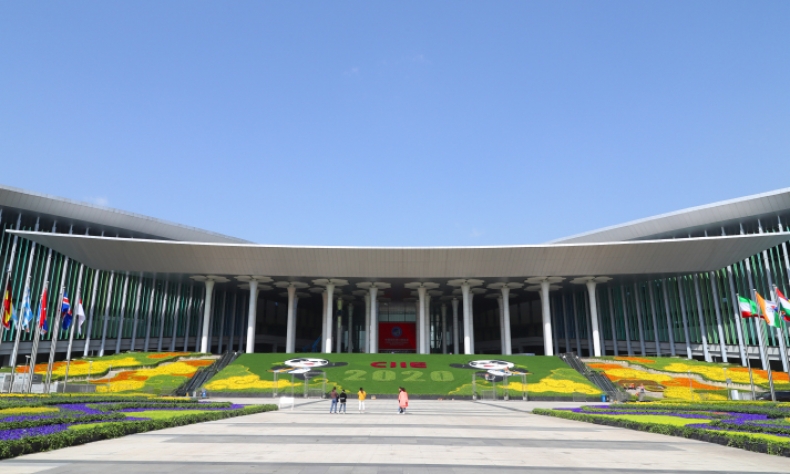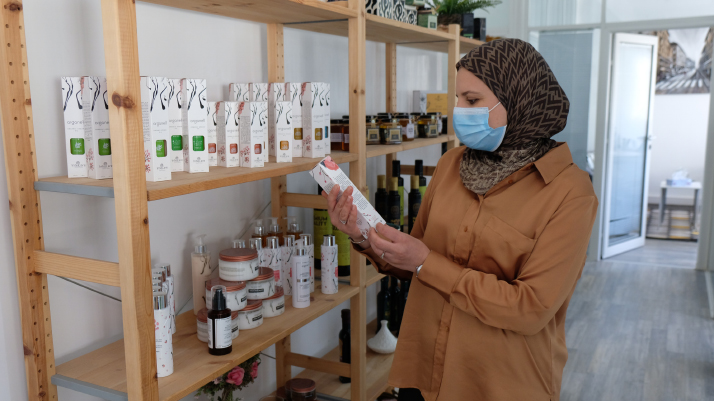China will Continue to Open Up Its Market through Shanghai Expo

As the world’s second largest economy, China remains appealing to exhibitors for its sound economic growth and enormous market potential. The CIIE has helped advance economic and trade exchanges and cooperation between different countries, promoted global trade and economic growth, and boosted an open global economy.
Despite the global economic slowdown and the spread of the novel coronavirus disease (COVID-19), the Third China International Import Expo (CIIE) kicking off in Shanghai on November 5 remains an attraction to global traders.
With the planned exhibition area for enterprises totaling 360,000 square meters, the event has four themes: technologies and equipment, consumer goods and smart lifestyles, food and agricultural products, and services and health. The six exhibition areas are on trade in services, automobiles, consumer goods, technical equipment, medical devices and healthcare products, and food and agricultural products.
The CIIE was initiated in 2018 by the Chinese Government to boost high-level opening up. In recent years, the anti-globalization trend as well as U.S. protectionism and unilateralism have continued to rise, posing challenges to the multilateral trade system with the World Trade Organization at its core. By holding the world’s first import-themed national-level expo, China showed its determination to safeguard free trade and globalization.
As the world’s second largest economy, China remains appealing to exhibitors for its sound economic growth and enormous market potential. The CIIE has helped advance economic and trade exchanges and cooperation between different countries, promoted global trade and economic growth, and boosted an open global economy.
Bringing opportunities
The CIIE encourages global businesses to share the fruits of China’s economic growth. Data released by the National Bureau of Statistics (NBS) on October 19 showed that China’s economy managed a V-shaped recovery in a world mired in recession due to the impacts of the pandemic.
In the first three quarters, the year-on-year GDP growths stood at -6.8 percent, 3.2 percent and 4.9 percent, respectively. Industrial capacity utilization in the third quarter reached 76.7 percent, up 2.3 percentage points from the second quarter. Total retail sales of consumer goods went up by 3.3 percent year on year in September.
In recent months, China’s economic performance as well as domestic supplies and demands have seen steady recovery. The International Monetary Fund has projected China’s GDP to grow by 1.9 percent this year. That would make China the only major economy to achieve positive economic growth. The World Bank also upgraded its June forecast, projecting that China’s annual GDP growth will reach 2 percent this year.
The expo serves as a gateway for more global businesses to enter the ultra-large Chinese market. NBS data showed that China’s total retail sales of consumer goods reached 41.2 trillion yuan ($6.1 trillion) in 2019, surpassing the U.S. to become the world’s largest consumption market. The momentum of consumption expansion is enhanced by its 1.4 billion people, including more than 900 million working-age people and over 400 million with middle income. The great potential will be further unleashed when the country completes its poverty alleviation campaign, upgrades the consumption model and improves the consumption capacity.
Today, China has become the single largest market for many multinational companies like BMW of Germany and Toyota based in Japan, and also the largest consumer of imported food. International products including Chilean cherries, German milk, Australian red wine and U.S. nuts have entered the Chinese market through the Air Silk Road and China-Europe freight trains.
By entering the Chinese market and learning about China, global enterprises can tap into the potential of the market and meet the demands of Chinese consumers for more diverse experience and a high-quality life.
During this CIIE, exhibition areas are set up for other developing countries which have a comparative edge on food, and agricultural and consumer products. Developed countries which lead in the automobile, medical device, and healthcare product industries as well as trade in services, have also established their respective booths. The CIIE provides opportunities for China’s trading partners with different levels of economic development.
Moreover, China is the world’s largest manufacturing hub with a complete industrial chain in all the categories listed in the United Nations industry classification system. That is one of the primary reasons for global companies to set up factories in China.
Even though some global enterprises are seeking to shift their supply chains from China to other countries to hedge risks after the pandemic, China will continue to be a magnet for multinational companies due to its complete industrial chain. It has also developed industrial clusters that can reduce enterprises’ procurement and logistics costs and shorten the time needed to adapt to changes in demands and technologies.

Better understanding
As China’s business environment steadily upgrades, the CIIE will enable global companies to share the benefits. Since the 18th National Congress of the Communist Party of China in 2012, China has focused on advancing delegation of power, enhancing regulation and improving services to remove the institutional barriers for the development of its domestic enterprises.
According to the China Business Environment Report 2020, the first such report issued by the National Development and Reform Commission in September, 98 cities across the country participated in a trial program which aims at reforming the assessment system of local business environment.
In 2019, the reform simplified approval procedures and lowered market access. The items on the nationwide negative list of foreign investment and that of foreign investment in pilot free trade zones have been cut to 40 and 37 respectively. While rules have become more open and transparent, supervision based on justice and fairness has been enhanced.
The reform of administrative services has been advanced by boosting Internet-based services and cutting procedures to bring convenience to the public. In 2019, the government cut 2.36 trillion yuan ($352 billion) of taxes and fees and canceled more than 13,000 certification items.
According to the World Bank’s Doing Business 2020 report, China’s ranking has risen 15 places compared with the previous year at 31st, making it one of the top 10 economies with the most significant improvement in business environment for two consecutive years.
The expo has also provided a channel for global companies to learn about China’s resolve of further opening up. China has also held the Canton Fair and the China International Fair for Trade in Services amid epidemic containment this year.
It has implemented the new Foreign Investment Law and regulations for improving the business environment, expanded the opening up of the financial industry and established three new pilot free trade zones for higher-level opening up.
In mid-October, the Ministry of Finance, the General Administration of Customs of China and the State Taxation Administration jointly issued a notice on improving preferential policies on tax for imported exhibits during the Third CIIE.
Besides the exemption of import tariff, value-added and consumption taxes will also be exempted for certain amount of imported exhibits during the event. Starting from the expo this year, tax reduction on the purchase of imported exhibits will be regularized to facilitate the expansion of imports for domestic enterprises.
The author is an associate researcher with the Chinese Academy of International Trade and Economic Cooperation.
 Facebook
Facebook
 Twitter
Twitter
 Linkedin
Linkedin
 Google +
Google +










